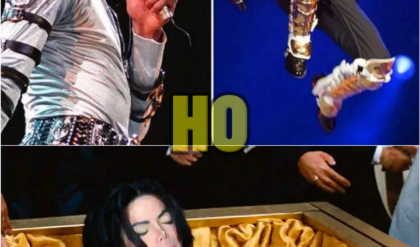Elvis Presley altered the course of music history—despite never performing outside the U.S. or Canada. The rock ‘n’ roll troubadour also starred in 31 films, served in the Army (after he was already famous) and once bought a presidential yacht. Check out more facts about Elvis that might surprise you.

1. Elvis had a twin.
On January 8, 1935, Elvis Aron (later spelled Aaron) Presley was born at his parents’ two-room house in East Tupelo, Mississippi, about 35 minutes after his identical twin brother, Jesse Garon, who was stillborn. The next day, Jesse was buried in an unmarked grave in nearby Priceville Cemetery.
Elvis, who spoke of his twin throughout his life, grew up an only child in a poor family. His father, Vernon, worked a series of odd jobs, and in 1938 was sentenced to three years in prison for forging a $4 check. (He spent less than a year behind bars.) In 1948, the Presleys moved from Tupelo to Memphis in search of better opportunities. There, Elvis attended Humes High School, where he failed a music class and was considered quiet and an outsider. He graduated in 1953, becoming the first member of his immediate family to earn a high school diploma. After graduation, he worked at a machinist shop and drove a truck before launching his music career with the July 1954 recording of “That’s All Right.”
2. Elvis bought Graceland when he was 22.
In 1957, Elvis shelled out $102,500 for Graceland, the Memphis mansion that served as his home base for two decades. Situated on nearly 14 acres, it was built in 1939 by Dr. Thomas Moore and his wife Ruth on land that once was part of a 500-acre farm dubbed Graceland in honor of the original owner’s daughter, Grace, who was Ruth Moore’s great-aunt. The Moores’ white-columned home also came to be known as Graceland, and when Elvis purchased the place he kept the name.
The entertainer made a number of updates to the property over the years, including the addition of music-themed iron entrance gates, a “jungle room” with an indoor waterfall and a racquetball building. After finding out President Lyndon Johnson enjoyed watching all three network news programs simultaneously, Elvis was inspired to have a wall of built-in TVs installed in his home. In 1982, five years after Elvis was found dead in a bathroom at Graceland, his ex-wife Priscilla Presley opened the estate to the public for tours. Some 600,000 fans now flock there each year. Elvis’ only child, Lisa Marie Presley, inherited Graceland when she turned 25 in 1993. Upon Lisa Marie Presley’s death in January 2023, Graceland was passed to Lisa Marie’s three daughters: Riley, and her twin half-sisters, Harper and Finley.
In 2006, George W. Bush became the first sitting U.S. president to visit Graceland, when he traveled there with Japanese Prime Minister Junichiro Koizumi, a die-hard Elvis fan.
3. Elvis’ controversial manager, Colonel Tom Parker, was a former carnival barker.
Born Andreas Cornelis van Kuijk in the Netherlands in 1909, Elvis’s future manager immigrated illegally to America as a young man, where he reinvented himself as Tom Parker and claimed to be from West Virginia (his true origins weren’t known publicly until the 1980s). He worked as a pitchman for traveling carnivals, followed by stints as dog catcher and pet cemetery founder, among other occupations, then managed the careers of several country music singers. In 1948, Parker finagled the honorary title of colonel from the governor of Louisiana and henceforth insisted on being referred to as the Colonel.
After learning about the up-and-coming Elvis in 1955, Parker negotiated the sale of the singer’s contract with tiny Sun Records to RCA, a major label, and officially took over as his manager in 1956. Under the Colonel’s guidance, Elvis shot to stardom: His first single for RCA, “Heartbreak Hotel,” released in 1956, became the first of his career to sell more than 1 million copies; his debut album, “Elvis Presley,” topped Billboard’s pop album chart; and he made his big-screen debut in 1956’s “Love Me Tender.”
The portly, cigar-chomping Parker controlled Elvis’ career for the next two decades, helping him achieve enormous success while at the same time taking commissions of as much as 50 percent of the entertainer’s earnings and drawing criticism from observers that he was holding Elvis back creatively. Parker outlived his protégé by 20 years, dying in 1997 at age 87 in Las Vegas.
4. Elvis served in the Army after he was already famous.
This Day in History: 12/20/1957 – Elvis Presley is Drafted
In December 1957, Elvis, by then a major star, was drafted into the U.S. military. After receiving a short deferment so he could wrap up production on his film “King Creole,” the 23-year-old was inducted into the Army as a private on March 24, 1958, amidst major media coverage. Assigned to the Second Armored Division, he attended basic training at Fort Hood, Texas. That August, while still at Fort Hood, he was granted emergency leave to visit his beloved mother, who was in poor health. Gladys Presley passed away at age 46 on August 14, 1958. The following month, Elvis shipped out for an assignment with the Third Armored Division in Friedberg, West Germany, where he served as a jeep driver and continued to receive stacks of fan mail.
While in Germany, he lived off base with his father and grandmother Minnie Mae Presley. It was also during this time that Elvis met 14-year-old Priscilla Beaulieu, the daughter of a U.S. Air Force captain. (After a lengthy courtship, Elvis and Priscilla married in 1967; the couple divorced in 1973.) Elvis was honorably discharged from active duty in March 1960, having achieved the rank of sergeant. His first post-Army movie, “G.I. Blues,” was released that November of that same year. The film’s soundtrack spent 10 weeks at the top of the Billboard album music chart and remained on the chart for a total of 111 weeks, the longest of any album in Elvis’ career. Elvis eventually starred in a total of 31 films.
5. Elvis never performed outside of North America.

Elvis Presley on The Ed Sullivan Show at CBS Television City, Los Angeles, September 9, 1956. (Credit: CBS via Getty Images)
CBS via Getty Images
An estimated 40 percent of Elvis’ music sales have been outside the United States; however, with the exception a handful of concerts he gave in Canada in 1957, he never performed on foreign soil. A number of sources have suggested that Elvis’ manager, Colonel Parker, turned down lucrative offers for the singer to perform abroad because Parker was an undocumented immigrant and feared he wouldn’t be allowed back into the U.S. if he traveled overseas.
6. Elvis was burned in effigy after an appearance on ‘The Ed Sullivan Show.’
In the summer of 1956, Colonel Parker arranged a deal for Elvis to make three appearances on “The Ed Sullivan Show” for a then-whopping fee of $50,000. Although Sullivan previously had said he wouldn’t book the hip-swiveling, lip-curling singer on his family-oriented TV variety show, he relented after competitor Steve Allen featured Elvis on his show in July 1956 and clobbered Sullivan in the ratings. When Elvis made his first appearance on Sullivan’s program on September 9, 1956, 60 million people—more than 80 percent of the TV viewing audience—tuned in. (As it happened, Sullivan, who had been injured in a car accident that August, was unable to host the show.) After the singer made his second appearance in October, crowds in Nashville and St. Louis, outraged by the singer’s sexy performance and concerned that rock music would corrupt America’s teens, burned and hanged Elvis in effigy.
The singer made his final appearance on Sullivan’s show in January 1957, and this time network censors demanded he be filmed from the waist up. Despite this requirement, at the end of the program, Sullivan gave the entertainer a special nod, telling the audience Elvis was “a real decent, fine boy,” and letting him know that “we’ve never had a pleasanter experience on our show with a big name than we’ve had with you.”
7. Elvis bought FDR’s presidential yacht
In 1964, Elvis paid $55,000 for the Potomac, the 165-foot-long vessel that served as FDR’s “floating White House” from 1936 to 1945. Constructed in 1934, the Potomac originally was a U.S. Coast Guard cutter. After the president’s death in 1945, the ship was decommissioned and had a series of owners before Elvis bought it. However, he soon donated it to St. Jude’s Children’s Hospital, which in turn sold the vessel to raise money. (In 1980, the Potomac, then being used by drug smugglers, was seized in San Francisco by U.S. Customs. It later was restored and opened to the public.)
Elvis’ yacht donation was one of many charitable acts after he would make during his life. In addition to giving away cars, jewelry and cash to friends and strangers, he performed a number of benefit concerts. One such performance, in 1961, generated more than $50,000 toward the completion of the USS Arizona Memorial in Hawaii. Work on the project, a tribute to the more than 1,100 men who died aboard the USS Arizona during the 1941 Pearl Harbor attack, had begun years earlier and then stalled due to a lack of funds. Elvis’ concert, for which tickets ranged from $3 to $100, helped reinvigorate fund-raising efforts for the memorial, and it was dedicated the following year.
HISTORY Vault: America the Story of Us
America The Story of Us is an epic 12-hour television event that tells the extraordinary story of how America was invented.





